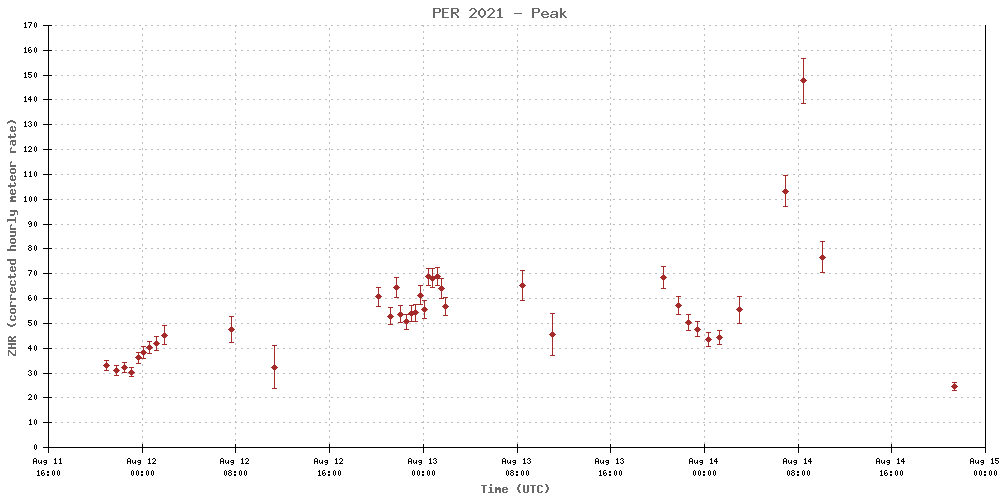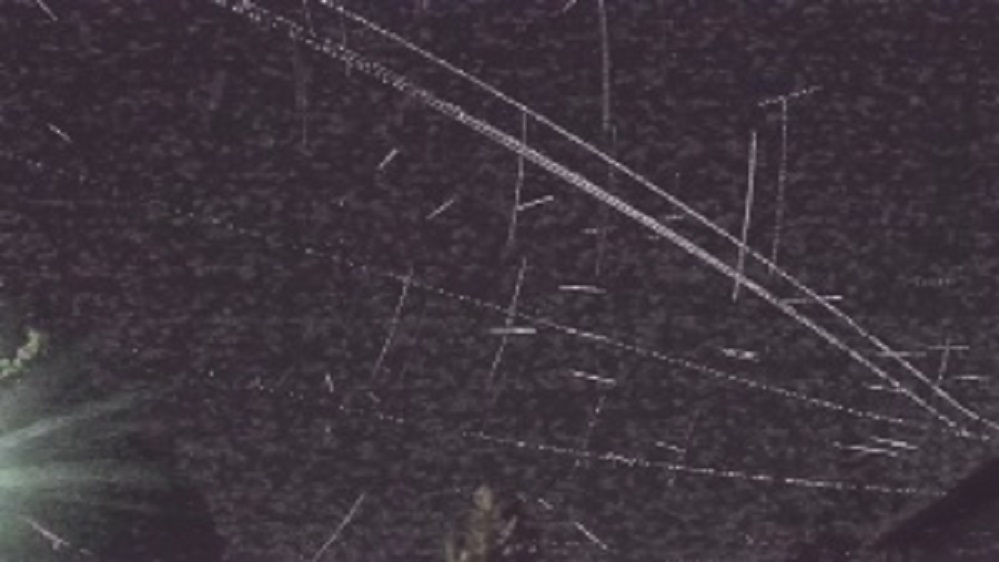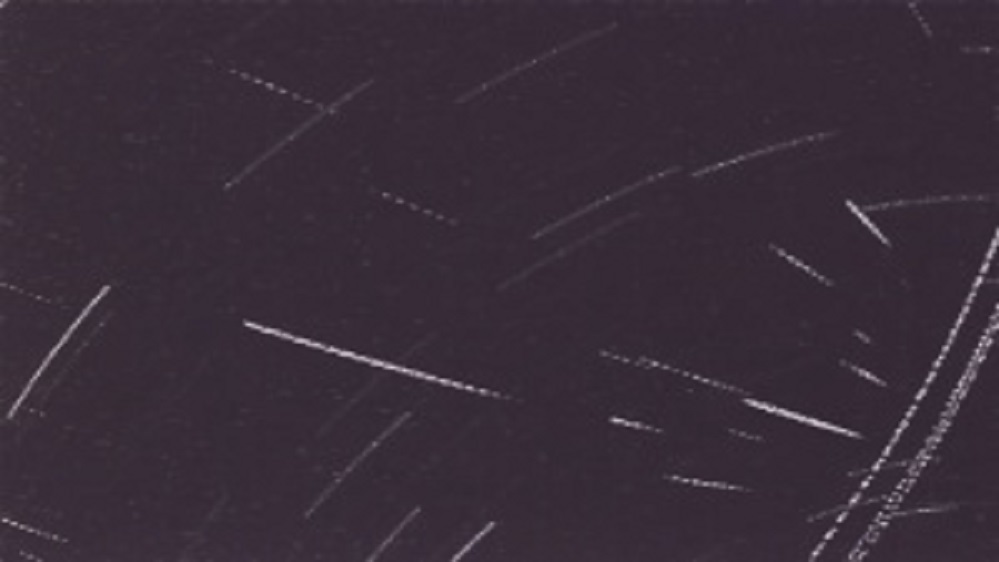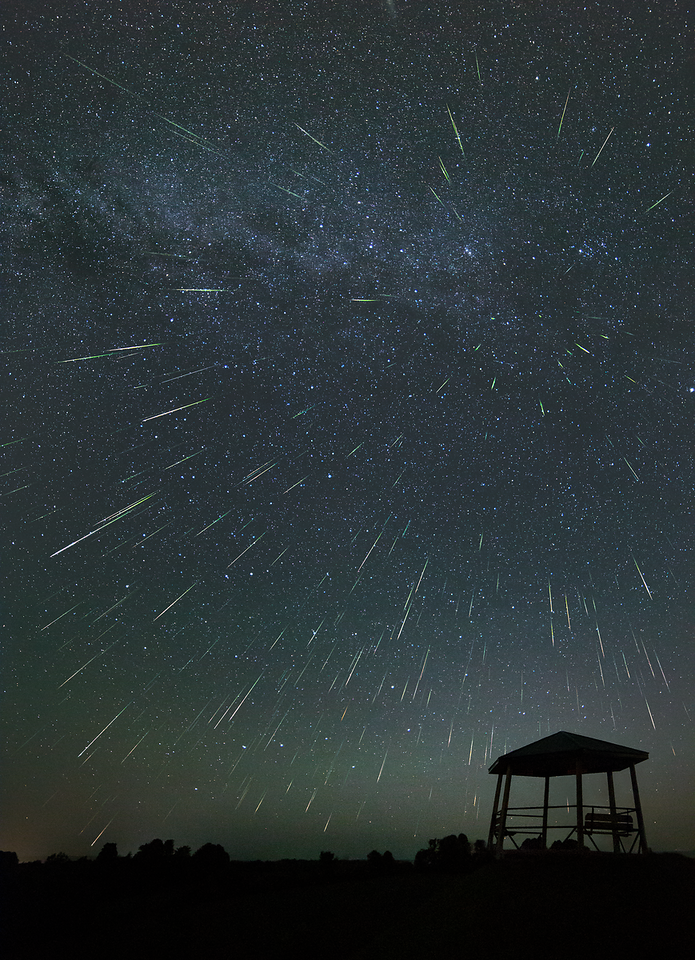

 This is a composite image of meteors captured from the San Diego area between 8-9 Universal Time (1:00-2:00am PDT) on August 14, 2014. This camera faces overhead and the radiant lies outside the frame to the right. The long streaks are aircraft. Courtesy University of Arizona
This is a composite image of meteors captured from the San Diego area between 8-9 Universal Time (1:00-2:00am PDT) on August 14, 2014. This camera faces overhead and the radiant lies outside the frame to the right. The long streaks are aircraft. Courtesy University of ArizonaOn the morning of August 14, 2021, the Perseid meteor shower displayed an unexpected outburst of meteors between 06:00 and 09:00 Universal Time (1:00-4:00am CDT). So far we have received visual confirmation of an impressive display of Perseids from observers in Wyoming and Ontario, Canada. AllSky camera systems located in Iowa have recorded between 900-1100 meteors each during the course of the entire night. My AllSky system, located outside of San Diego, CA, recorded just under 600 meteors with cloud interference and a lower radiant altitude. The cause of this outburst is currently unknown but is probably the result of an unknown filament of comet debris produced by comet 109P/Swift–Tuttle as it raced through the inner solar system many centuries ago . Rates are normally 50 percent lower each preceding night after maximum but these rates are two to three times more than was seen during the expected maximum on the night of August 12/13. Peter Jenniskens, using his CAMS network of cameras, has calculated the time of maximum to be 08:14 Universal Time on August 14th. He believes that this outburst may be related to the lesser enhancements that occurred in 2018 an 2019. William J. Cooke, Head of the NASA Meteoroid Environments Office, stated ” We currently think this outburst was caused by very old material ejected from Comet Swift-Tuttle – way before 0 AD. This would also explain why no one predicted it, given that the Perseid stream models only go back a couple of thousands of years.”

References: https://www.meteornews.net/2021/08/14/strong-outburst-perseids-on-august-14-2021-06-09-ut/
Heather M. Wendelboe: Personal Communication
Michael Hankey: Personal Communication
William J. Cooke: Personal Communication via Michael Hankey
Pierre Martin: Personal Communication
 American Meteor Society
American Meteor Society